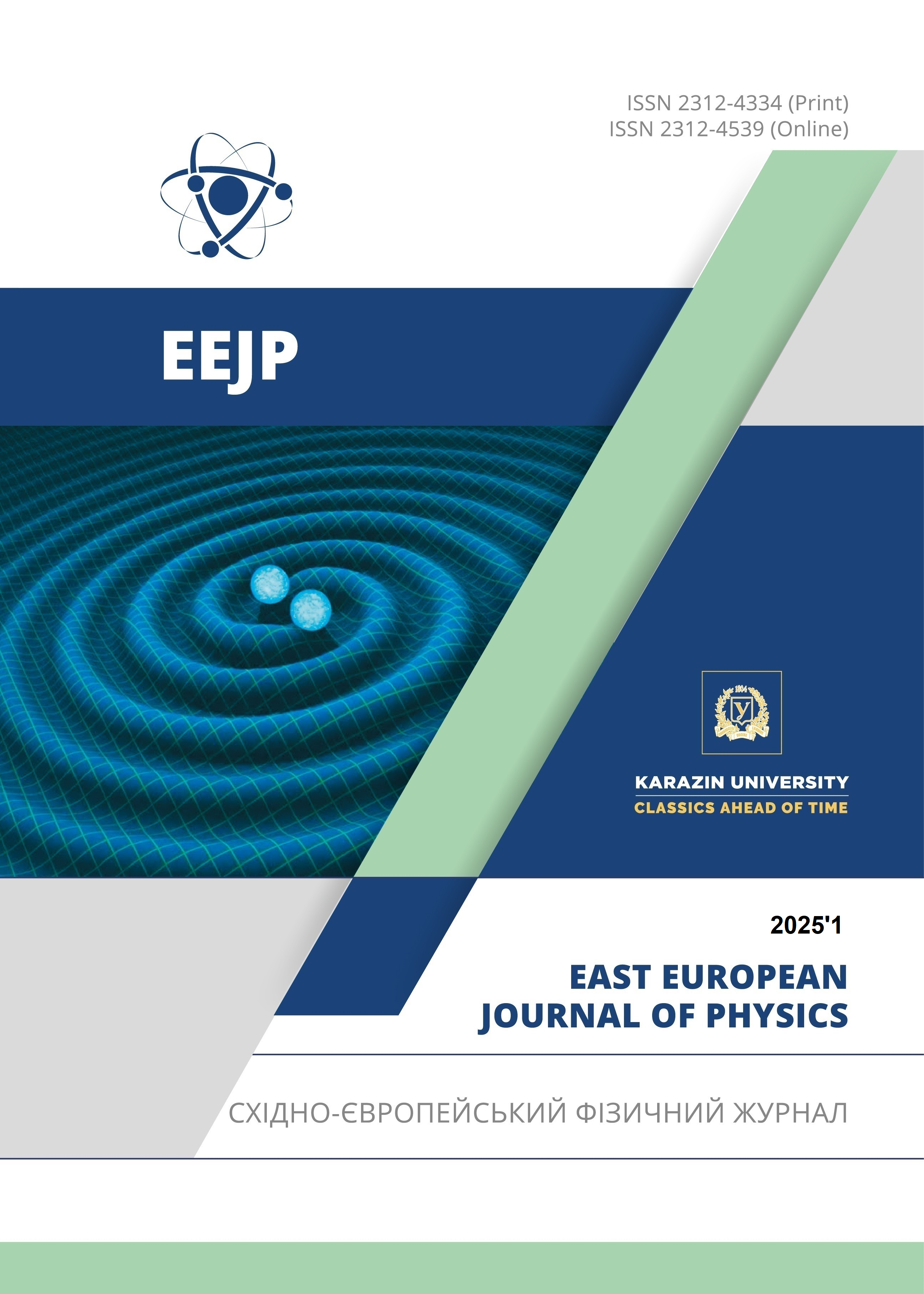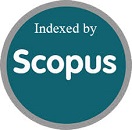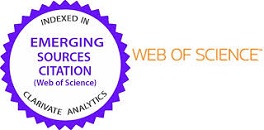A New Fourth Order Compression Dependent Equation of State
Abstract
This study introduces a new first- to fourth-order exponential equation of state (EOS) to enhance accuracy across varying compression levels. The proposed exponential EOS is compared to the widely used fourth-order Birch-Murnaghan EOS, and it not only matches but surpasses precision, especially at high compression. This comparison serves as a clear benchmark for the readers to understand the superiority of the new model. The findings of this study are crucial, as they reveal that the fourth-order exponential EOS provides an unmatched accuracy level at higher compression, notably for materials like HCP-iron and sodium halides. The Birch-Murnaghan EOS, though effective at low compression, deviates from experimental values at higher levels. Additionally, the study examines the Shanker EOS, in which M. Kumar et al. [Physica B: Condensed Matter, 239(3-4), 337-344 (1997)] suggest the requirement to improve at high compression and improve by fitting parameters that vary from material to material. This limitation is removed by developing the fourth-order exponential EOS, which is more versatile, offering reliable results across both low- and high-compression scenarios in high-pressure physics.
Downloads
References
S.R. Baty, L. Burakovsky, and D. Errandonea, “Ab initio phase diagram of copper,” J. Phys. Condens. Matter, 11(48), 1–14 (2021). https://doi.org/10.3390/cryst11050537
P. Singh, B.K. Pandey, S. Mishra, and A.P. Srivastava, “Formulation for the melting temperature prediction of metallic solids using suitable equation of states,” Comput. Condens. Matter, 35, e00807 (2023). https://doi.org/10.1016/j.cocom.2023.e00807
J. Gal, “ab Initio DFT and MD Simulations Serving as an Anchor for Correcting Melting Curves Reported by DAC and SW Experiments—Some Transition Metals as Illustrative Examples,” Crystals, 13(8), (2023). https://doi.org/10.3390/cryst13081263
P. Parisiades, “A review of the melting curves of transition metals at high pressures using static compression techniques,” Crystals, 11(4), (2021). https://doi.org/10.3390/cryst11040416
J. Shanker, M.P. Sharma, and S.S. Kushwah, “Analysis of melting of ionic solids based on the thermal equation of state,” J. Phys. Chem. Solids, 60(5), 603–606 (1999). https://doi.org/10.1016/S0022-3697(98)00323-0
K. Kholiya, and J. Chandra, “A theoretical model to study the melting of metals under pressure,” Mod. Phys. Lett. B, 29(27), (2015). https://doi.org/10.1142/S0217984915501614
S. Kumar, A. Kumar, S. Abbas, M. Al Qurashi, and D. Baleanu, “A modified analytical approach with existence and uniqueness for fractional Cauchy reaction-diffusion equations,” Adv. Differ. Equations, 2020(1), (2020). https://doi.org/10.1186/s13662-019-2488-3
S. Kumar, K.S. Nisar, R. Kumar, C. Cattani, and B. Samet, “A new Rabotnov fractional-exponential function-based fractional derivative for diffusion equation under external force,” Math. Methods Appl. Sci. 43(7), 4460–4471 (2020). https://doi.org/10.1002/mma.6208
S. Kumar, R. Kumar, R.P. Agarwal, and B. Samet, “A study of fractional Lotka-Volterra population model using Haar wavelet and Adams-Bashforth-Moulton methods,” Math. Methods Appl. Sci. 43(8), 5564-5578 (2020). https://doi.org/10.1002/mma.6297
R.S. Chauhan, K. Lal, and C. P. Singh, “Pressure dependence of melting temperature in alkali halides,” Phys. B Condens. Matter, 396(1-2), 211–213 (2007). https://doi.org/10.1016/j.physb.2007.04.006
I.Y. Alkammash, “Evaluation of pressure and bulk modulus for alkali halides under high pressure and temperature using different EOS,” J. Assoc. Arab Univ. Basic Appl. Sci. 14(1), 38–45 (2013). https://doi.org/10.1016/j.jaubas.2013.01.001
Z. Wang, P. Lazor, and S.K. Saxena, “The analysis on high pressure melting temperature dependence of the thermodynamic parameters of solids,” Mater. Lett. 49(5), 287–293 (2001). https://doi.org/10.1016/S0167-577X(00)00386-4
C. Nie, “Pressure derivative of the melting temperature for some alkali halides,” Can. J. Phys. 88(3), 175–179 (2010). https://doi.org/10.1139/P10-004
J. Ma, et al., “Modeling the pressure-dependent melting temperature of metals,” Phys. Earth Planet. Inter. 309, (2020). https://doi.org/10.1016/j.pepi.2020.106602
R.S. Chauhan, and C.P. Singh, “Analysis of melting for alkali halides based on the potential energy curve,” Phys. B Condens. Matter, 324(1), 151–156 (2002). https://doi.org/10.1016/S0921-4526(02)01289-9
M. Kumar, and M. Kumar, “Shanker formulation needs modification at high pressures,” Journal of Physics and Chemistry of Solids, 68(4), 670-672 (2007). https://doi.org/10.1016/j.jpcs.2007.01.036
J. Shanker, S.S. Kushwah, and P. Kumar, “Equation of state and pressure derivatives of bulk modulus for NaCl crystal,” Physica B: Condensed Matter, 239(3-4), 337-344 (1997), https://doi.org/10.1016/S0921-4526(97)00349-9
O.L. Anderson, Equation of State of Solids for Geophysics and Ceramic Science, (Oxford Univ. Press, Oxford, 1995).
B.J. Brennan, and F.D. Stacey, “A thermodynamically based equation of state for the lower mantle,” JGR Solid Earth, 84(B10), 5535-5539 (1979). https://doi.org/10.1029/JB084iB10p05535
A.P. Srivastava, B.K. Pandey, A.K. Gupta, et al., “The Relevance of the New Exponential Equation of State for Semiconductors,” Iran J. Sci. 48, 1067–1074 (2024). https://doi.org/10.1007/s40995-024-01657-1
T. Katsura, and Y. Tange, “A Simple Derivation of the Birch–Murnaghan Equations of State (EOSs) and Comparison with EOSs Derived from Other Definitions of Finite Strain,” Minerals, 9(12), 745 (2019). https://doi.org/10.3390/min9120745.
A.P. Srivastava, B.K. Pandey, A.K. Gupta, et al., “Theoretical prediction of thermoelastic properties of bismuth ferrite by a new approach,” J. Math. Chem. 62, 2253–2264 (2024). https://doi.org/10.1007/s10910-024-01647-z
F.D. Stacey, “Finite strain, thermodynamics and the earth’s core,” Physics of the Earth and Planetary Interiors, 128(1–4), 179 193 (2001). https://doi.org/10.1016/S0031-9201(01)00285-0
A. Dhoble, and M. P. Verma, “Thermodynamic analysis of the Anderson-Grüneisen parameters,” Physica Status Solidi b, 133(2), 491-497 (1986). https://doi.org/10.1002/pssb.2221330207
O.L. Anderson, L. Dubrovinsky, S.K. Saxena, and T. LeBihan, “Experimental vibrational Grüneisen ratio values for ϵ-iron up to 330 GPa at 300 K,” Geophysical Research Letters, 28(12), 2359-2359 (2001). https://doi.org/10.1029/2000GL008544
S.N. Vaidya, and G.C. Kennedy, “Compressibility of 27 halides to 45 kbar,” Journal of Physics and Chemistry of Solids, 32(5), 951-964 (1971). https://doi.org/10.1016/S0022-3697(71)80340-2
Y.S. Sorensen, “Phase transitions and equations of state for the sodium halides: NaF NaCl, NaBr, and NaI,” JGR Solid Earth, 88(B4), 3543-3548 (1983). https://doi.org/10.1029/JB088iB04p03543
Copyright (c) 2025 Abhay P. Srivastava, Brijesh K. Pandey, Anod Kumar Singh, Reetesh Srivastava

This work is licensed under a Creative Commons Attribution 4.0 International License.
Authors who publish with this journal agree to the following terms:
- Authors retain copyright and grant the journal right of first publication with the work simultaneously licensed under a Creative Commons Attribution License that allows others to share the work with an acknowledgment of the work's authorship and initial publication in this journal.
- Authors are able to enter into separate, additional contractual arrangements for the non-exclusive distribution of the journal's published version of the work (e.g., post it to an institutional repository or publish it in a book), with an acknowledgment of its initial publication in this journal.
- Authors are permitted and encouraged to post their work online (e.g., in institutional repositories or on their website) prior to and during the submission process, as it can lead to productive exchanges, as well as earlier and greater citation of published work (See The Effect of Open Access).








